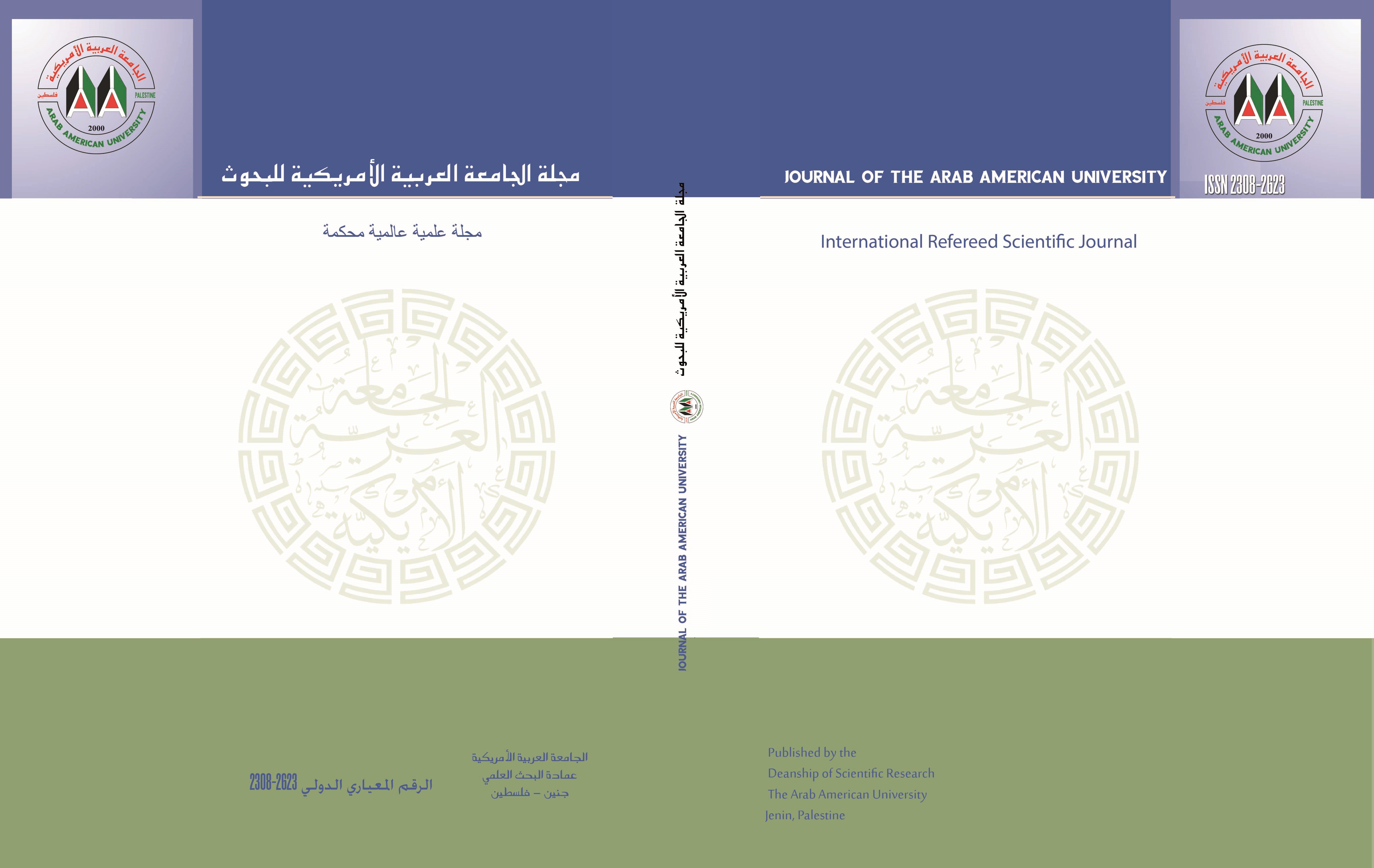Journal of the Arab American University مجلة الجامعة العربية الامريكية للبحوث

Abstract
In this research, the impact of some climate change effects on the olive tree was studied. Specifically, the research investigated the impact of the lack of water and drought on the physiology of olive trees using stable carbon isotopic (Delta13C) and C/N ratios. Four olive cultivars including Souri, Roomi, Improved-Nabali, and Nasouhi, planted in three geographical areas with different rainfall patterns were used. These locations are Yatta/Hebron area (dry and low rainfall area with less than 300 mm/year), Jab’a/Jerusalem area (semi-dry and medium rainfall zone), in addition to the Kufer Ra’e/Jenin area (area of high rainfall, higher than 550 mm/year). The results showed significant differences among the four examined olive cultivars, where Souri cultivar revealed significant variance (less negative) to the stable carbon isotopic values (Delta13C), particularly in the dry zone. In addition, Delta13C values of this cultivar were in accordance with the annual rainfall ( more negative in dry areas "-27", a medium in the semi-arid "-26" areas, and less negative in high rain areas "-25"). On the contrary, Roomi cultivar exhibited values for Delta13C(less negative in dry areas and more negative in the higher rainfall areas). Statistical analysis of C/N also revealed high significant differences for Souri and Roomi cultivars compared with Improved-Nabali and Nasouhi cultivars. In conclusion, the Souri cultivar could be regarded as most appropriate cultivar for future cultivation considering its adaptability with climate change conditions, especially for arid and semi-arid areas. However, Roomi cultivar might be suitable for cultivation in areas with higher rainfall
Recommended Citation
Basheer-Salimia, Rezq
(2017)
"Using Stable Isotope ( 13C) and C/N ratio to study the effects of Climate Change on Olive trees,"
Journal of the Arab American University مجلة الجامعة العربية الامريكية للبحوث: Vol. 3:
Iss.
1, Article 5.
Available at:
https://digitalcommons.aaru.edu.jo/aaup/vol3/iss1/5

